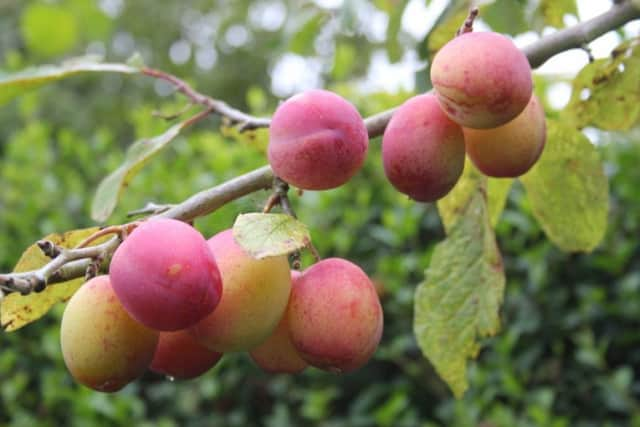Autumn brings one big blast of abundance before winter takes over


I agree with all of it, except for her thoughts on spring. From a cooking point of view there’s much to celebrate at this time of year. It’s like nature has one big last blast of abundance before winter takes its grip. Plums, apples, elderberries, blackberries, rowan berries are all ripe for the picking and now is the time to start preserving them.
I love old recipe books and would often refer to May Byron’s Jam Book. It was published in 1923 but the recipes are still pertinent today. There are no complicated methods just no nonsense instructions like “crush raspberries in a bowl with a silver spoon, add pound for pound in heated sugar, and set them over a clear, slow fire.”
Advertisement
Advertisement
You don’t necessarily have to go all posh with the silver spoon but hey that’s your choice! And forget the firewood and just use your regular cooker.
To make a good fruit jam like berry or plum, boil the fruit with an equal part of sugar. When the mixture reaches 105c on a sugar thermometer it’s at setting stage. If you don’t have this piece of equipment, place a saucer in the freezer for an hour before you start making the jam. When the jam reaches setting stage it will set instantly when you test a drop on the cold plate.
Elderberries are a fruit often ignored. You can use the flowers for cordial or champagne but it’s easy to forget about the juicy berries. They’re tart and intense, with a fabulous, almost black, decadent hue and make a great savoury jelly that’s perfect with ham, game or duck. Cut clumps of berries and then remove the fruit using a fork to tease them from the stalks. Boil half a kilo of berries with 250g of chopped apples, and 500ml red wine or port. Simmer for an hour then transfer to a jelly bag or sieve lined with a clean pillow case. Measure the liquid and weigh out 250g sugar for every 275ml liquid. Simmer for 30 minutes, add a wee knob of butter to help clarify the mix and check if it’s ready in the same way as you would for jam.
Pour into sterilised jars (the dish washer’s the best way if you have one, or else just place on a tray in a medium oven for 10 minutes), cover with a disc of wax paper and seal.
Advertisement
Advertisement
This year’s apple crop has been superb. The tree in my garden, the “Discovery” variety is a mass of shiny, scarlet orbs. The fruit laden branches are trailing on the ground with the fruit still attached. Cut into them and they display a pink mottled flesh that’s juicy and sweet. When you have a glut of cooking apples you can make them into chutney or cook 500g with 175g of brown sugar and a pinch of clove to make an apple butter. Eating apples are harder to preserve. Last year I quartered, cored and peeled them, cooked them for a minute in a syrup made of equal quantities of water and sugar and a squirt of lemon juice. When cool they were packed into plastic bags and frozen. When defrosted they could be used for fruit pies, purees, and as part of fruits poached in mulled wine. My first recipe uses them as a puree in a traditional cheesecake tart. These little traybakes are mainly served cold, but they’re delicious served hot straight from the oven with a dollop of cream.
My other recipe uses jam in a classic Queen of Puddings. Pieces of sponge are soaked in custard and baked. The confection is then topped with jam and meringue and returned to the oven. Quivery sugary topped whipped egg white with custard, sponge and jam below – what could be better?